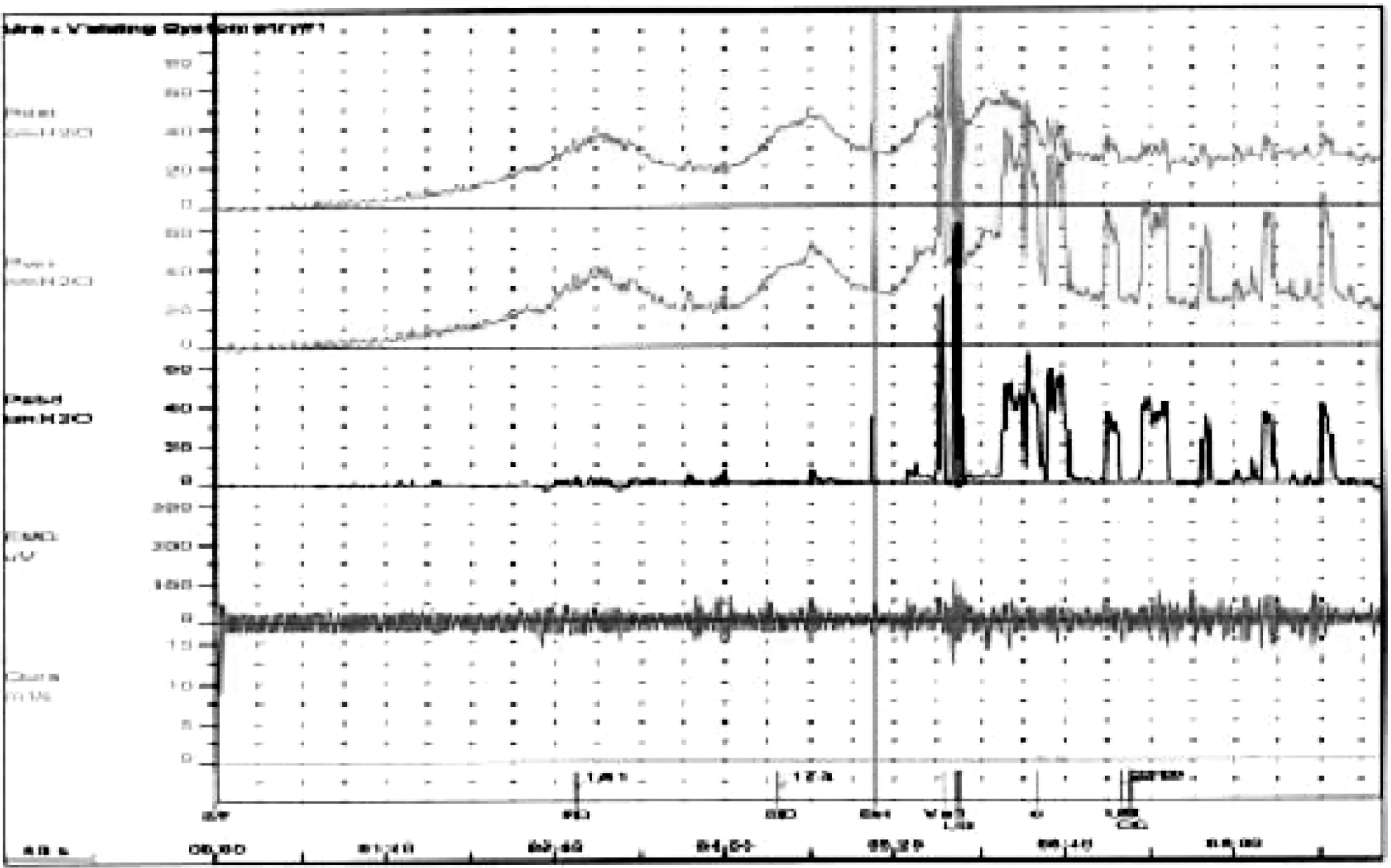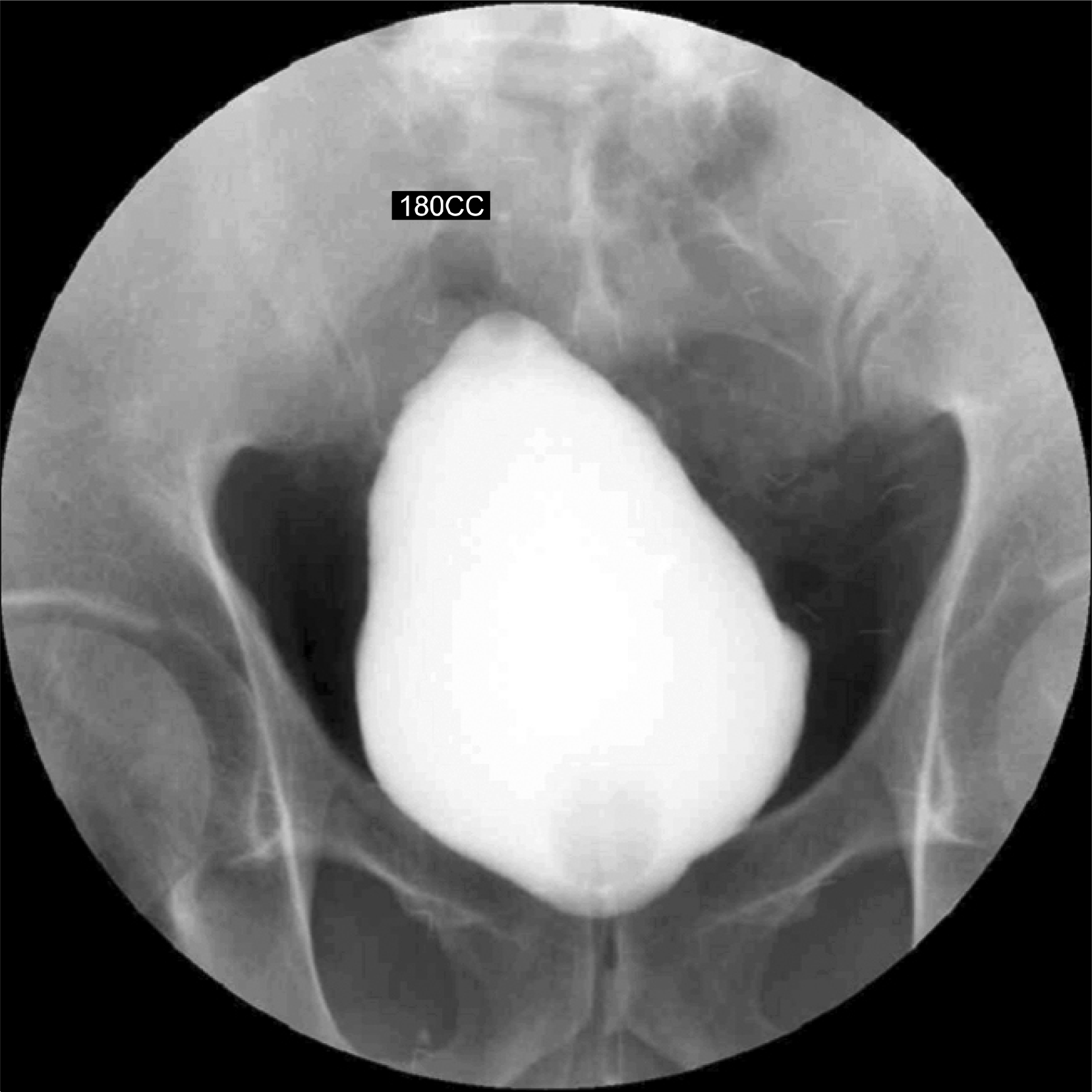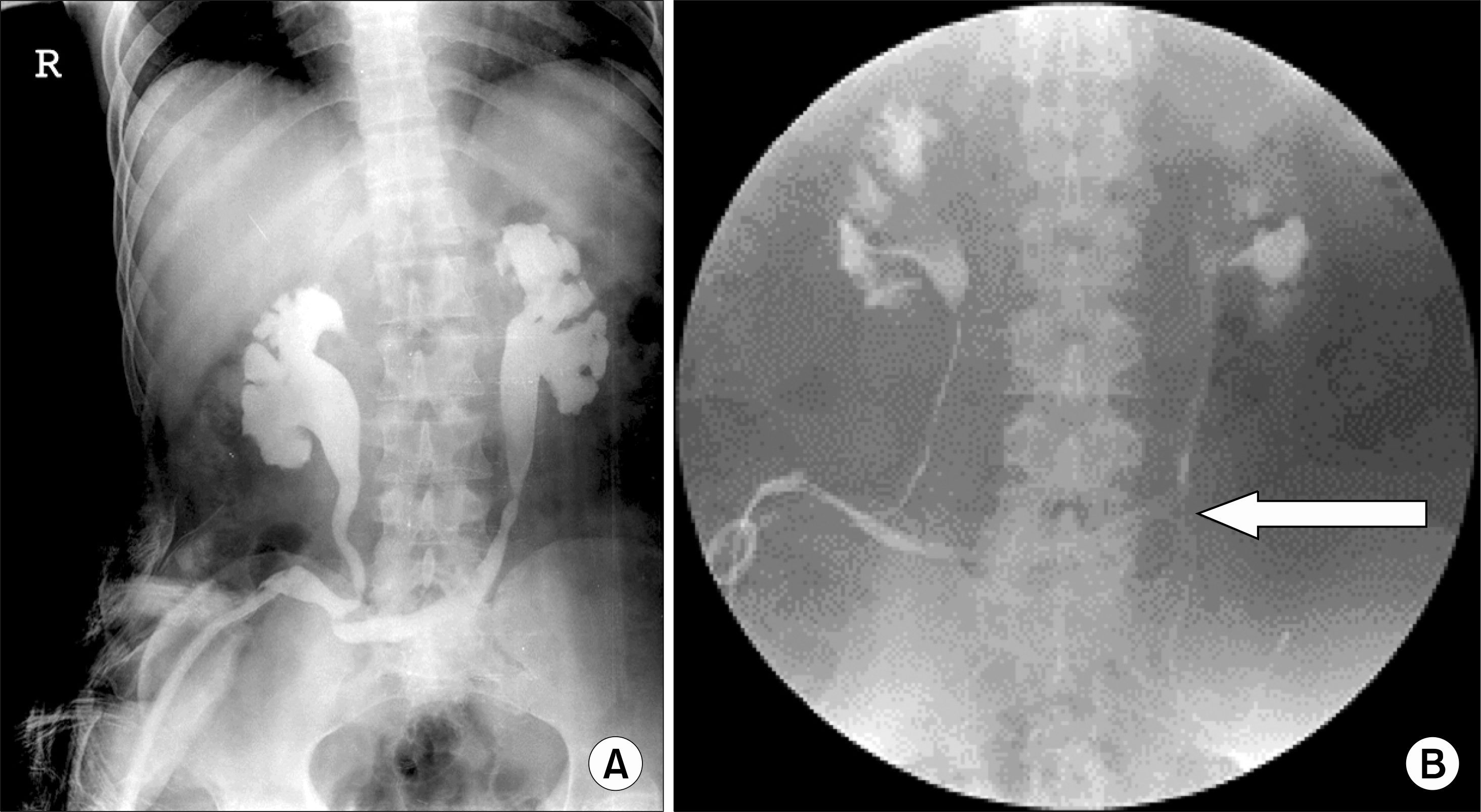Abstract
It is known that many renal transplantation candidates with end stage renal disease have bladder dysfunction. Before 1966, these patients were considered poor candidates for renal transplantation because of their many bladder problems. But it has recently been reported that renal transplantation with an ileal conduit could solve these problems. Herein, we report on a patient with Hinman's syndrome and this patient underwent renal transplantation using a pre-existing cutaneous ureterostomy.
REFERENCES
1. Hinman F, Baumann FW. Vesical and ureteral damage from voiding dysfunction in boys with neurologic or obstructive disease. J Urol. 1973; 109:727–32.
2. Kelly WD, Merkel FK, Markland C. Ileal urinary diversion in conjunction with renal homotransplantation. Lancet. 1966; 1:222–6.

3. Levitt SB, Caberwal D, Kogan SJ, Romas NA, Hardy MA. Use of pre-existing ureterocutaneous anastomosis as conduit in renal allotransplantation. Urology. 1979; 13:377–82.

4. Kim SJ, Bang HY, Kim ST, Lee SE. Renal transplantation using ileal conduit. J Korean Soc Transplant. 1991; 5:113–6.
5. Williams JL, Confer DJ, DeLemos RA, Monite JE. Colon conduit in pediatric renal transplantation. J Urol. 1980; 124:515–8.

6. Shick E, Tanagho EA. The effect of gravity on ureteral peristalsis. J Urol. 1973; 109:187–91.
7. Glass NR, Uehling D, Sollinger H, Belzer F. Renal transplantation using ileal conduit in 5 cases. J Urol. 1985; 133:666–8.
8. Santiago-Delpin EA, Acosta-Otero A, Vazquez-Lugo A. Ureteral implantation in the kidney transplantation: the use of a mature end ureterostomy. J Urol. 1980; 124:513–4.
Fig. 1.
Urodynamic study (UDS) shows staccato voiding with detrusor hypereflexia and detrusor-sphincter dyssynergia.

Fig. 2.
The pre-kidney transplantation (Pre-KT) cystogram shows a 180cc bladder capacity and an improved bladder shape compared with the previous voiding cystourethrogram (VCUG).





 PDF
PDF ePub
ePub Citation
Citation Print
Print




 XML Download
XML Download